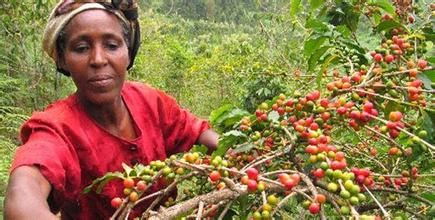Description of Coffee Bean Flavor Variety characteristics of Coffee Bean production area treatment manor introduction
Description of Coffee Bean Flavor Variety characteristics of Coffee Bean production area treatment manor introduction
Mellow [Body]: the taste of the tongue after drinking coffee. The change of mellowness can be divided into light to light, medium, high, fat, and even Indonesian coffee is as thick as syrup.
Odor [Aroma]: the smell and aroma emitted after the coffee has been prepared. The words used to describe smell include caramel, carbon roast, chocolate, fruit, grass, malt, and so on.
Bitterness [Bitter]: bitterness is a basic sense of taste, and the sensory area is distributed in the base of the tongue. The bitterness of deep baking is deliberately created, but the common cause of bitterness is too much coffee powder and too little water.
Light [Bland]: coffee grown in lowlands, usually quite light and tasteless. Coffee with insufficient coffee powder and too much water will have the same light effect.
Salty [Briny]: after brewing, if the coffee is overheated, it will produce a salty taste.
The aroma of soil [Earthy]: commonly used to describe spicy and earthy Indonesian coffee, not the smell of dirt on coffee beans.
Uniqueness [Exotic]: describes coffee with its unique aroma and special flavor, such as flowers, fruits, and spices. Coffee from East Africa and Indonesia usually has this property.
Aromatic alcohol [Mellow]: used to describe coffee with good acidity balance.
Mild [Mild]: used to describe a coffee with a harmonious, delicate flavor, used to refer to all plateau coffee except Brazil.
Soft [Soft]: describes low acidity coffee such as Indonesian coffee, and also describes it as mellow or sweet.
Sour [Sour]: a sense of taste in which the sensory area is mainly located at the back of the tongue and is characteristic of light roasted coffee.
Spice [Spicy]: a flavor or smell reminiscent of a particular spice.
Strong [Strong]: technically, it describes the advantages and disadvantages of various tastes, or the relative ratio of coffee to water in a particular conditioned product. In terms of popular usage, it describes the strong flavor of deep-roasted coffee.
Colombia is the second largest coffee industrial country after Brazil in output. The more famous producing areas are "Metenin", "Marissares", "Bogota" and "Armenia". The coffee beans cultivated are very rich in taste, quality and stable in price. The internationally renowned high quality beans are Colombia-Supremo / Colombia-Excelso of Colombia. Its taste is characterized by sour, bitter, sweet and strong, brewed coffee color such as brewed wine; with a unique sour and mellow taste, moderate baking refreshing, deep baking mature strong, there is a faint unique flavor between the two, fried coffee beans, acidity reduced full content, the appearance is more large and beautiful. In addition to its large output, Columbia can produce everything from low-grade to high-grade products, some of which are rare good products in the world and taste so mellow that people can't put them down.

Important Notice :
前街咖啡 FrontStreet Coffee has moved to new addredd:
FrontStreet Coffee Address: 315,Donghua East Road,GuangZhou
Tel:020 38364473
- Prev

Coffee bean rough grinding suitable for brewing utensils: (), flannel dripping filter pot.
Coffee bean rough grinding suitable for brewing utensils: (), flannel dripping filter pot. Each extraction apparatus has its own appropriate degree of grinding, so grinding is not the degree of grinding you want. As I just said, when extracting coffee with filter paper trickling filtration, the coffee powder is too coarse or too fine, which means that the most suitable grinding degree is medium to medium roughness.
- Next

Introduction to the method of flavor description and taste treatment of coffee bean Yega Xuefei manor
The flavor description and taste treatment method of coffee bean Yega Chuefei Manor introduces the oldest sun treatment method of Yejia snow caffeine, but in 1972, Ethiopia introduced the water washing technology of Central and South America in order to improve its quality. it makes the jasmine and citrus aroma of Yega Snow more clear and refined, and it has become one of the best beans in the world, thanks to the exquisite washing technology after the 1970s.
Related
- Guji coffee producing area of Guji, Ethiopia: Humbela, Shakiso, Wulaga
- What is the most expensive variety of Qiloso in BOP multi-variety group?
- How to store the coffee beans bought home?
- Why are Yemeni coffee beans so rare now?
- Ethiopian Sidamo all Red Fruit Sun Sun Santa Vini Coffee beans
- SOE is mostly sour? What does it mean? Is it a single bean? what's the difference between it and Italian blending?
- Is Italian coffee beans suitable for making hand-brewed coffee?
- How to choose coffee beans when making cold coffee? What kind of coffee beans are suitable for making cold coffee?
- Just entered the pit to make coffee, what kind of coffee beans should be chosen?
- Can only Japan buy real Blue Mountain Coffee? What are authentic Jamaican Blue Mountain coffee beans?

